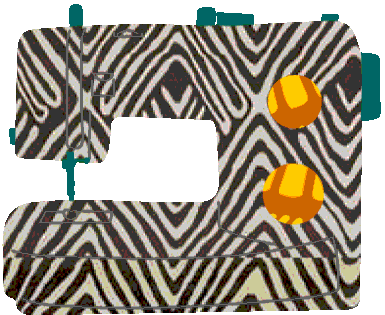The Slow Fashion Season Initiative Encourages Conscious Choices
“The fashion industry is historically responsible for enormous amounts of water consumption (32 million Olympic size swimming pools per year) and CO2 emissions (8% of global greenhouse emissions - and growing fast). Textile dyeing is the second largest polluter of clean water globally, only after agriculture. Then there is the enormous waste creation (148 million tons by 2030) and land use (115 million hectares by 2030), and we haven’t even started on labour conditions yet...Enough numbers, time for action. Time for Slow Fashion Season! If 25,000 people participate, we will save the equivalent of up to 750 million liters of water and 2.5 million kilograms of CO2 emissions. If 25,000 people commit to making only conscious fashion choices from June 21st to September 21st, we’ll all do it!”
Such reads the statement of the Slow Fashion Season initiative, which is using CollAction as its main platform. This initiative was born in the summer of 2019, when Clara Doyle and Tuanh Lam, decided to take on a big issue: the fast fashion industry. They, along with 14, 487 other people across the globe, did not buy any new clothes for three months and, in doing so, inspired a collective action that will be repeated again this year. Those participating in the Slow Fashion Season, commit to three months of not buying any new clothes, starting June 21st to September 21st. Initially, participants were encouraged to only trade, upcycle or DIY their clothing, or to buy second-hand and vintage. Due to the global Coronavirus pandemic, however, this year, the initiative is also motivating participants to support sustainable, local, small fashion labels who may be currently struggling.
“The Coronavirus pandemic has changed all of our lives and we understand that taking part in a challenge may not be top of your list. However, we still wanted to bring this community together, connect like-minded individuals and grow our impact. There have been people reflecting on what the new ‘normal’ should be. The aim of Slow Fashion Season has always been to raise awareness about the fashion industry and how you as a consumer play a role in it. As a consumer, you have the power to change the industry for the better,” the statement reads on the Slow Fashion Season’s CollAction page. “We are aware that many small businesses and entrepreneurs have been affected and are suffering because of this. That is why we have adjusted the campaign to fit the current situation and instead of not buying anything new for three months, this year it’s all about making conscious choices. This includes supporting the small sustainable fashion labels that are going through a difficult time. But, always think twice before you buy."

The idea of not buying anything new for three months – especially after so long in lockdown! – and having to take on the responsibility of sourcing, mending or trading items, can seem rather daunting, particularly to those who are only now starting to make the switch from fast fashion to slow fashion. Fortunately, this initiative offers wealth of support to everyone who is new to the concept or simply in need of ideas as to how to best go about this challenge with fun tips, tricks and projects. Upon joining this initiative via CollAction, you can take it all a step further by joining the Slow Fashion Season Facebook Group, where members and participants share lots of ideas, their experiences, motivational posts that will help you make conscious decisions – “Fast Fashion isn’t free. Someone somewhere is paying for it” – and, of course, important information that will keep you on the right track. Here is a great example of a prompt that will encourage you to make sustainable fashion decisions:
“What happens to garments you no longer wear? Will they be recycled? We have been looking into this matter and it turns out that 82% in fact goes into landfill and incineration streams and only 17% goes into recycling and sorting streams. The average consumer nowadays buys 60% more items of clothing than back in 2000, but each garment is kept for half as long as consumers discard items more quickly. These buying habits contribute to the 39 million tonnes of post-consumer textile waste that is generated worldwide each year. Of the 17% that goes into recycling and sorting about half is recycled, 40% is re-used as second-hand clothing and the remaining 10% in fact ends up in the waste stream. We hope that you did not get dizzy about these numbers. Bottom line: our consumption behaviour has changed drastically over the last 20 years leading to a high rate of discarded clothing and only very little is recycled.”
If you would like to form part of this fantastic initiative, sign up via the CollAction platform today, and check in with all the great ways you can prepare yourself for a slow fashion season on Instagram. Following the motto, “if many little people in many little places do many little things, they can change the face of the earth”, Slow Fashion Season is calling upon all fashionistas to add their little grain to a big movement. Refuse, reduce, reuse and recycle for a sustainable future in fashion.
